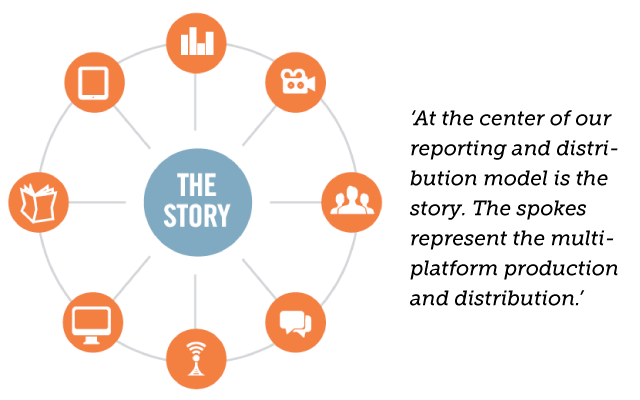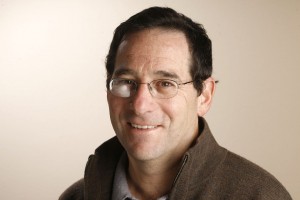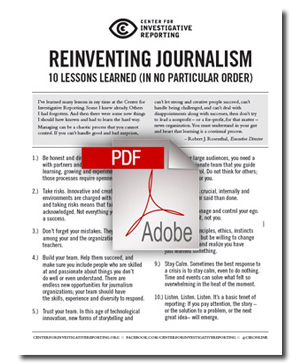Sustaining Investigative Journalism Means Finding a New Model
I’m not sure I would have become the executive director of the Center for Investigative Reporting in January 2008 if I had really understood the challenges ahead of me and had thought them out carefully; I had no idea what I was getting into.
When CIR approached me, I was 59 and unemployed. For the second time in six years, I had left, or been asked to leave, high-level editing positions at large metropolitan newspapers. Most recently, I had been managing editor at the San Francisco Chronicle; before that, I was editor of The Philadelphia Inquirer. Nearly 40 years working in newsrooms left me with solid core competencies. I knew a good story, I was passionate and I got great personal reward from enabling talented journalists do what they do best. But many of these skills were not very useful outside a newsroom.
I could also look back, knowing that I had been privileged to be involved with great journalists and important journalism. As a 22-year-old, I was an editorial assistant at The New York Times and was assigned to work on the Pentagon Papers team. At 25, as a reporter at The Boston Globe, I was part of a newspaper-wide effort that won the Pulitzer Prize gold medal for public service.
I later moved to the Inquirer, where I was a reporter and editor during that newspaper’s golden age. It was a demanding culture in which reporters were encouraged to be ambitious and take risks. We also believed we could produce the best journalism in the country. It was a supportive system driven by stories, especially those that could make a difference. And it was fun.
The newsroom cultures of that era nurtured young, talented journalists. So many of them had worked their way up from copyboy or clerk jobs, through a system that rewarded hard work and talent. It was an environment where young journalists were taught by some of the most skilled and experienced men and women in the business. The best editors gave reporters room to flourish, guiding and teaching along the way, and they held us to rigorous standards.
I learned that the best editors, and the best newsrooms, cleared the way for you to succeed – while lending all the support needed. This was vividly conveyed by one of my most influential and powerful mentors, Gene Roberts, then the editor of the Inquirer. He had just told me he was going to name me foreign editor, my first editing job. I asked him, “What do the best editors do?”
“Well,” he drawled, “they are like a blocking back in football. They go through the line, knock somebody down, clear the way, and lie in the mud so the guy with the ball can step on their back and score.”
The image has stuck with me. The most successful editors put their bets on people who can deliver for them. When a reporter proved he or she could produce a great story, the reward was to get to do the next one. There was an adrenaline-filled urgency that made newsrooms crackle. Those staffs rarely worried about who was financially sustaining the work. And they never imagined that it might end.
At the Inquirer and the Chronicle, I believed that I could make a difference in these newsrooms that, like many others, were beginning an unprecedented struggle for survival. But I was deeply frustrated by a lack of vision, ambition and passion on the business side that was throttling creativity and undermining the crucial role that journalism, and especially investigative reporting, play in our democracy.
As an editor, the priority was on content – not profit. That was the responsibility of the business side. I never had to worry about raising a dime. Many conversations with publishers or corporate officers focused on money. I was never comfortable with those discussions. Far too often, these conversations were about cutbacks aimed not at maintaining profit, but increasing it at the expense of good journalism.
Once, on a visit to the Miami corporate headquarters of Knight Ridder (the owner of the Inquirer), I walked into an office to find two executives dancing a jig. I stood there, embarrassed, while they laughed and explained that the share price had hit a new high that day. They were about to cash in some stock options.
That scene stuck with me and was a crude reminder of the disconnect in values between journalists and the corporate office. There was nothing wrong with profit; those profits had supported the work of journalists, including cost-intensive investigative reporting, for decades. But the demand for ever-increasing profit was the source of the difference between a creative, story-driven culture and a numbers culture.
I relate that story because I see now that every defeat and every success I’ve had, from the first day I walked into a newsroom in 1969 as a summer intern to the day I exited as an editor decades later, has informed my decisions. These experiences have provided the fuel to help me transform and grow CIR and to create California Watch, our successful statewide reporting team.



